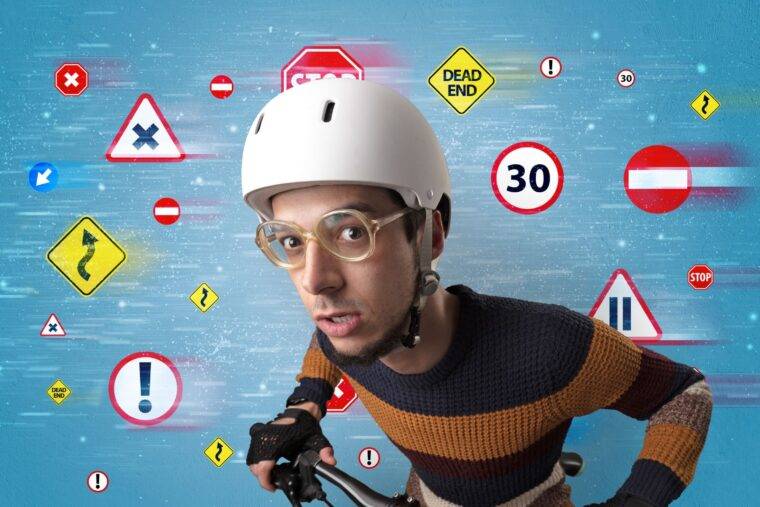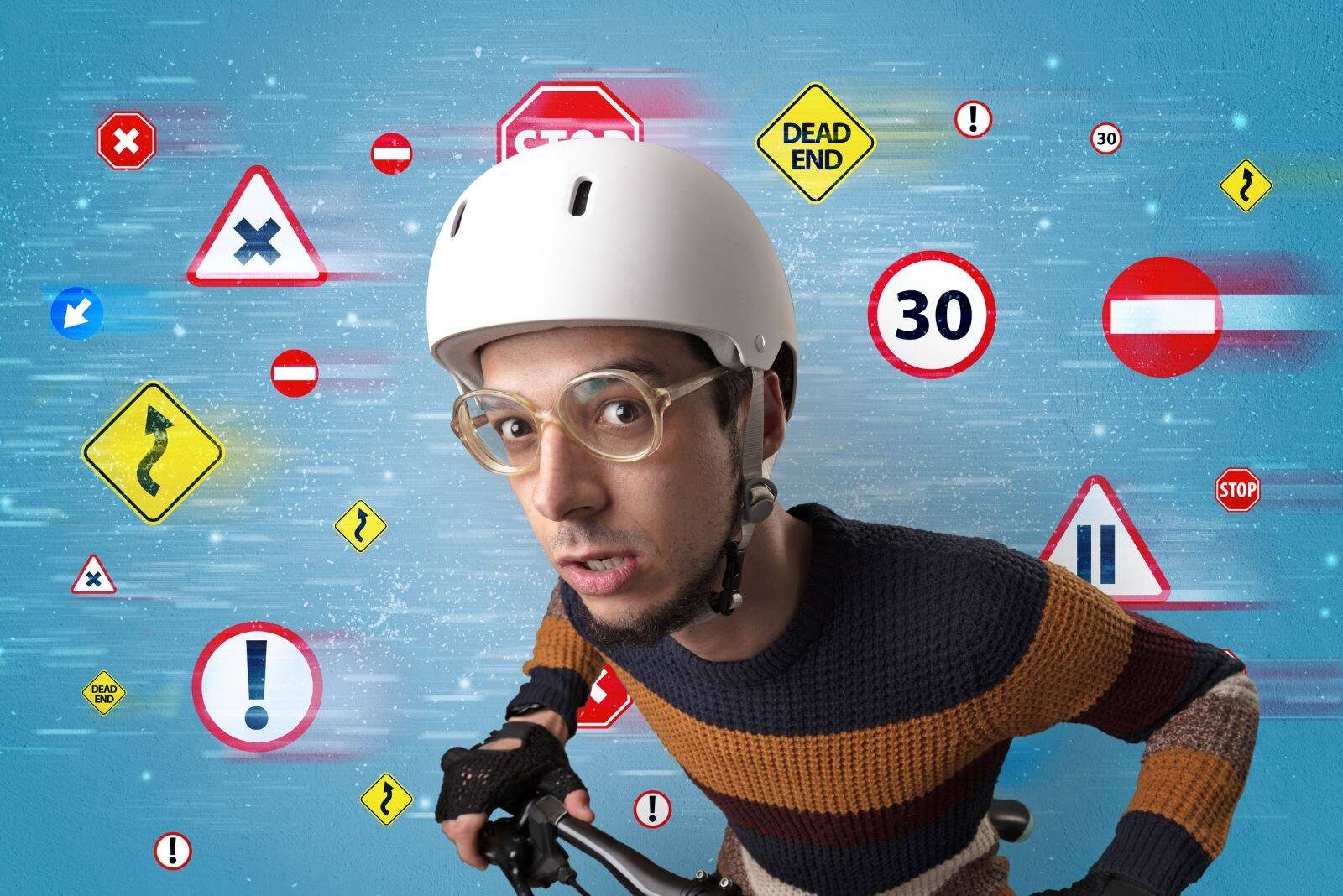
There are lots of misconceptions around what it is legal and illegal for cyclists to do on the roads, or even what cyclists should be doing to be a considerate road user. This confusion has resulted in many an argument between motorists and cyclists, and contributes towards accidents on the roads.
In early 2022, the Highway Code was updated to improve clarity, implementing a hierarchy of road users depending on the amount of risk they pose. This gave cyclists some more freedoms to better protect themselves, for example formalising the advice to ride in the middle of the lane where safer, but also some more responsibilities when it comes to protecting more vulnerable road users like pedestrians and horses.
Here, we’ll take you through all of the laws, rules and guidelines in the UK Highway Code for cyclists, explaining what you legally can and cannot do, what you should do for your own safety and the safety of others, and explain how these rules have changed from the previous Highway Code.
UK Highway Code for Cyclists: Summary
Rules 59 to 82 of the Highway Code are concentrated on cycling, but the official documents can be a bit wordy. Below, we’ve summarised the key rules and recommendations for cyclign in Britain, including what cycling can legally do, what they are advised to do and what they are not allowed to do.
Cyclists Can Legally:
Ride in the centre of the lane on quieter roads, in slower moving traffic, and at junctions/road narrowings (Rule 72)
Ride in bus lanes (Rule 65)
Ride two abreast (Rule 66)
Take priority when going straight ahead at a junction (Rule 76)
Ride in the left or right-hand lane on roundabouts (Rule 79)
Cycle across toucan crossings which are shared by cyclists and pedestrians (Rule 82)
Not wear a helmet (Rule 59)
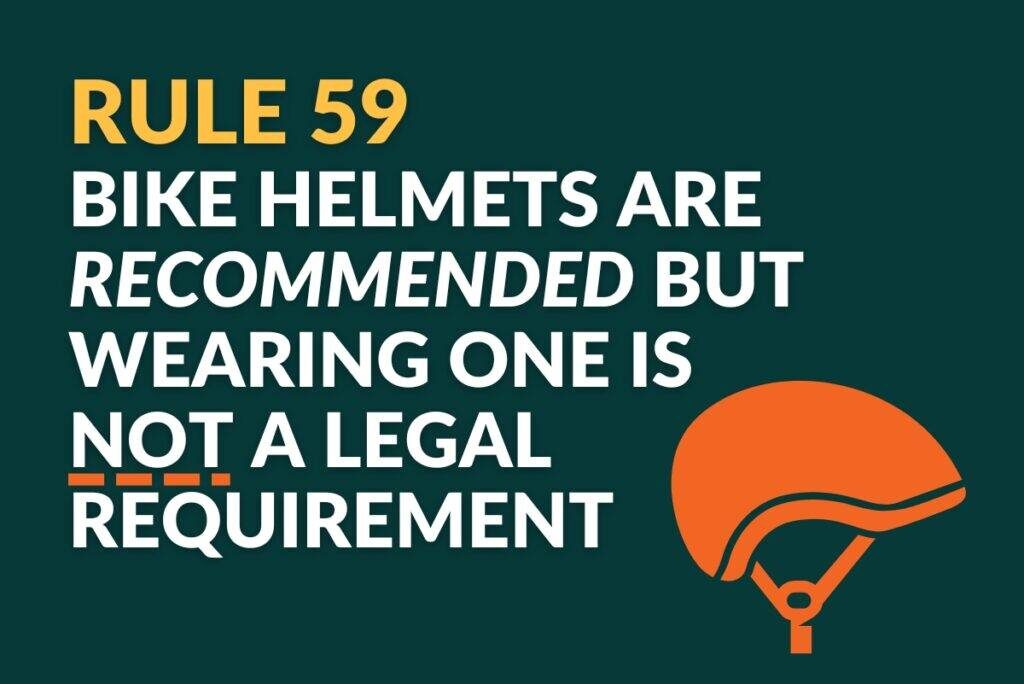
Cyclists Should (Optional):
Wear a Helmet (Rule 59)
Wear fluorescent/light-coloured clothing for visibility (Rule 59)
Not carry anything that could make them lose control of their bike (Rule 66)
Park their bike sensibly in a way that doesn’t cause an obstruction or hazard (Rule 70)
Keep 0.5m away from the kerb on busy roads, and further where safer (Rule 72)
Allow faster moving vehicles to overtake where safe to do so (Rule 72)
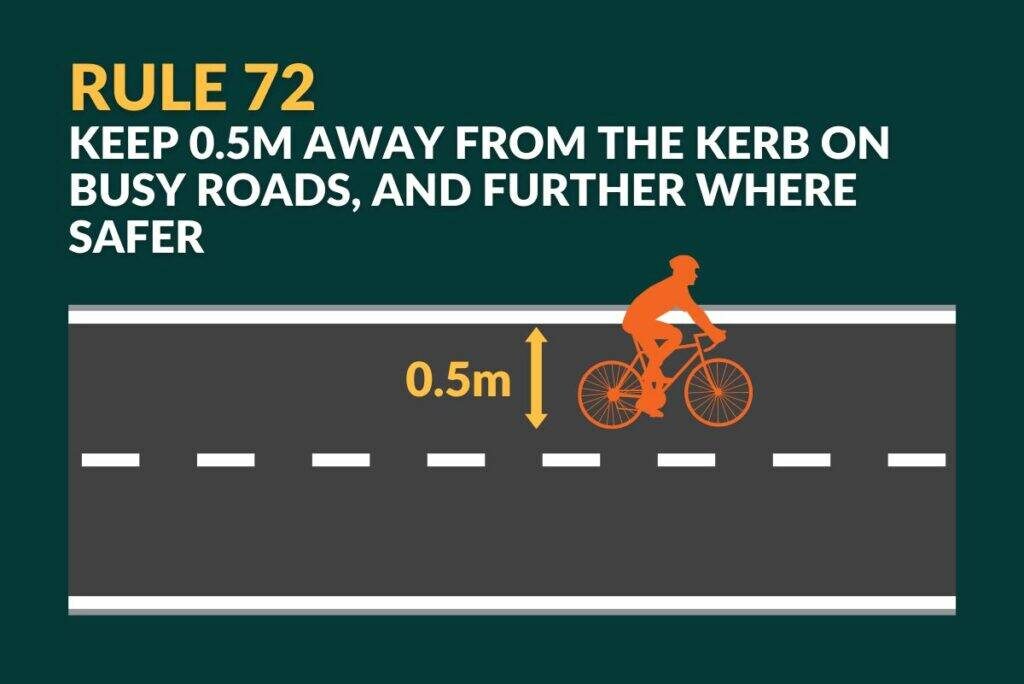
Cyclists Must Not:
Have no lights on their bike: Cyclists must have white front and red rear lights lit at night, and bikes must be fitted with a red rear reflector and amber pedal reflectors, if manufactured after 1/10/85 (Rule 60)
Enter into the pedestrian footpath when using cycle tracks (Rule 62)
Cycle on a pavement (Rule 64)
Carry a passenger unless the bike has been built or adapted to do so (Rule 68)
Hold onto a moving vehicle or trailer (Rule 68)
Ride dangerously, carelessly or inconsiderately (Rule 68)
Ride when under the influence of drugs or alcohol, including medicine (Rule 68)
Ignore traffic signs and traffic light signals (Rule 69)
Cross the stop line at a red light (Rule 71)
Highway Code for Cyclists: All 23 Rules and Laws
Rule 59: Cyclists should avoid wearing clothing that can get caught in the chain or obscure bicycle lights. They should also wear a cycle helmet that conforms to the current regulations, is the correct size and is correctly fastened, and fluorescent/light-coloured clothing is recommended for visibility.
Rule 60: At night you must have white front and red rear lights lit, and your bike must be fitted with a red rear reflector and amber pedal reflectors, if manufactured after 1/10/85.
Rule 61: Use cycle lanes where they make your journey safer and easier – cyclists are not obliged to use them.
Rule 62: When using cycle tracks – routes for cyclists that are physically protected from motor traffic – cyclists must keep to the side intended for cyclists and not enter into the pedestrian footpath. If there is no separate footpath, you should take care when passing pedestrians.
Rule 63: Take care when passing pedestrians, horse riders or horse-drawn vehicles – do not pass them at speed or too close, and you should not pass a horse on its left.
Rule 64: You must not cycle on a pavement.
Rule 65: Most bus lanes can be used by cyclists as indicated on signs. Be careful when doing so. Do not pass between the kerb and a bus when it is at a stop.
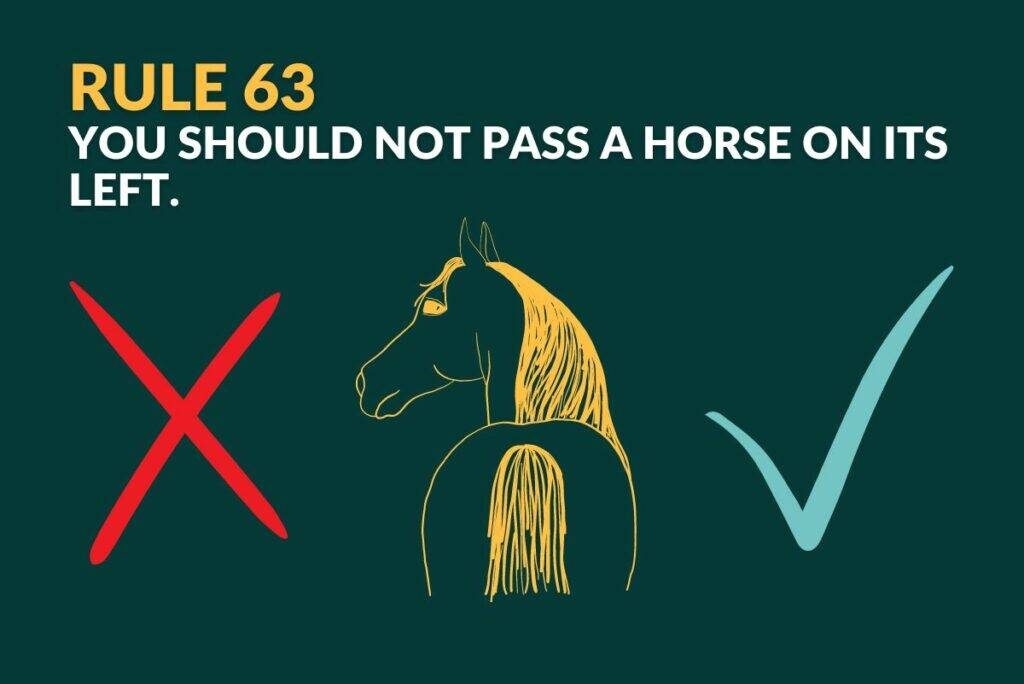
Rule 66: Cyclists should:
- Ensure they keep control of their cycle, including not carrying anything that could make them lose their balance or that might get tangled in bike
- Be considerate of other road users in general, including using a bell to make their presence known
- Be considerate of other road users when riding in groups, including allowing drivers to overtake when you think it’s safe
- You can ride two abreast, and it may be safer to do so
- Not ride close behind a vehicle in case it stops suddenly
Rule 67: You should:
- Remain aware of your surroundings by looking around before turning or pulling away
- Look out for obstructions in the road
- Leave a door’s width or one metre when passing parked vehicles
- Watch out for pedestrians stepping into your path
- Be aware of other road users
- Use signals to show your intention
- Take care near traffic calming features like road humps and narrowings
- Only pass on the left of large vehicles when cycling on the road
Rule 68: You must not:
- Carry a passenger unless your bike has been built or adapted to do so
- Hold onto a moving vehicle or trailer
- Ride dangerously, carelessly or inconsiderately
- Ride when under the influence of drugs or alcohol, including medicine
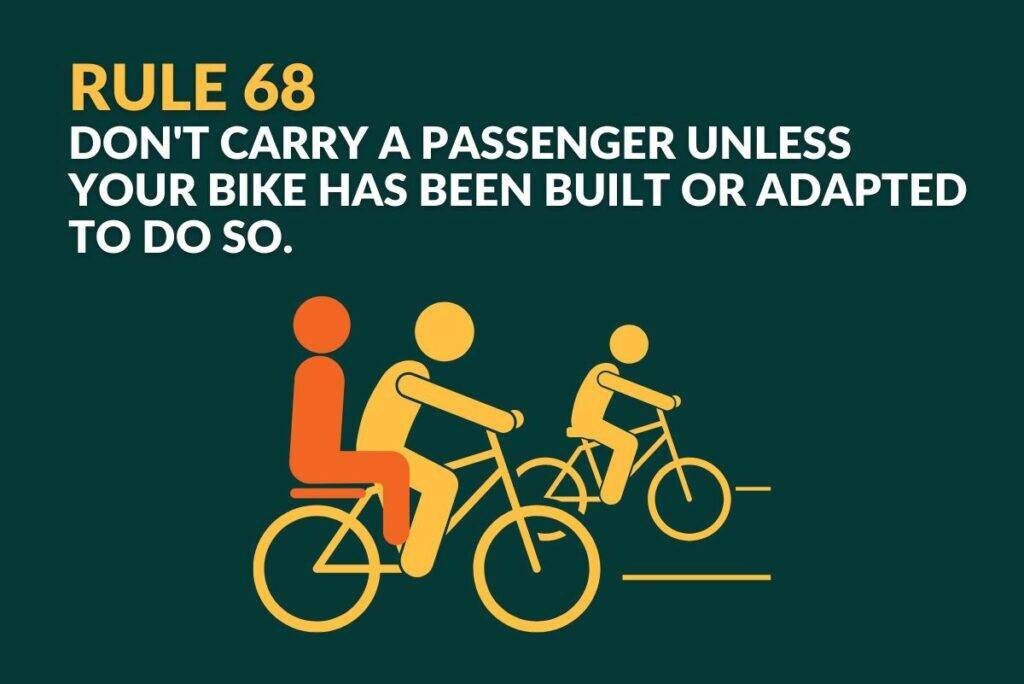
Rule 69: You must obey all traffic signs and traffic light signals.
Rule 70: When parking your bike, find a conspicuous location where it can be seen by passers-by, use cycle parking facilities where possible, don’t create an obstruction or hazard, and secure it well.
Rule 71: At traffic lights, you must not cross the stop line when the lights are red.
Rule 72: Road positioning – there are two basic positions to adopt depending on the situation.
- Ride in the centre of your lane to make yourself as visible as possible – this is used on quiet roads, in slower moving traffic, and when approaching junctions or narrowings where it’d be unsafe for drivers to overtake you
- On the left – On busy roads, you should keep 0.5 metres away from the kerb, and further where it’s safer. You should allow faster-moving vehicles to overtake where it is safe to do so.
Rule 73: At junctions:
- Use cycle facilities, eg small cycle traffic lights, where it’s safer and easier to do so
- If there are no separate cycle facilities, act like you’re driving a motor vehicle
- Position yourself in the centre of your lane where safe. If this doesn’t feel safe, you can dismount and walk your bike across the junction.
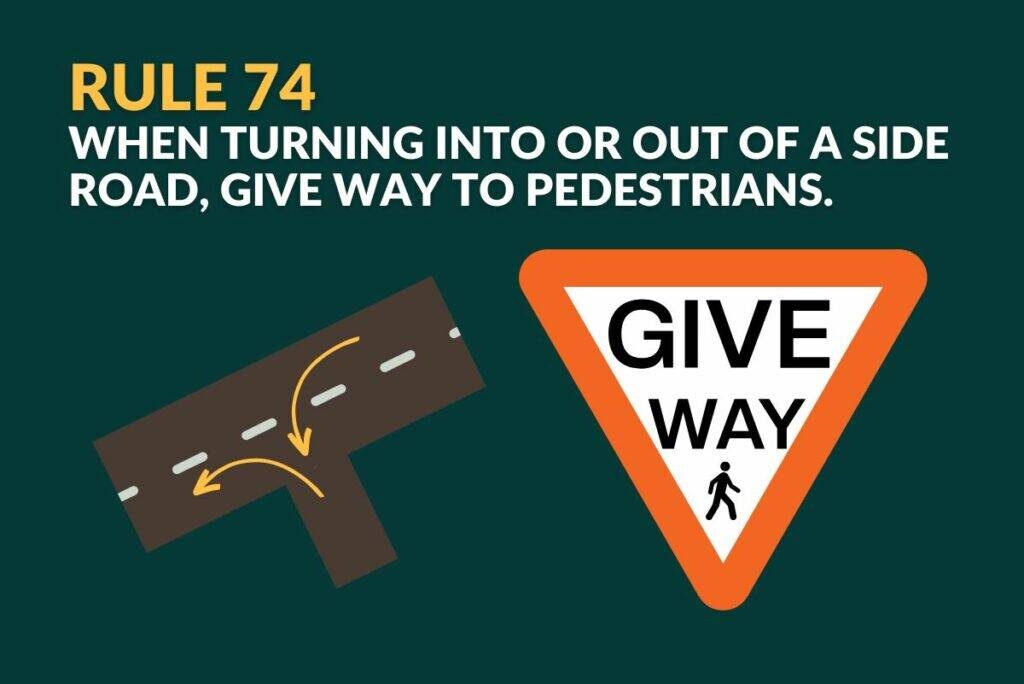
Rule 74: When turning:
- If turning left, watch out for other vehicles turning into or out of the side road. Check for other cyclists or motorcyclists before signalling, and do not ride on the inside of vehicles signalling or slowing down to turn left.
- If turning right, check the traffic then signal and move into the centre of the road, waiting for a safe gap before turning. You might want to dismount and push your bike across the road if safer.
- When turning into or out of a side road, give way to pedestrians.
Rule 75: Two stage turns – at some signal-controlled junctions, cyclists may be instructed to turn right in two stages:
- When the traffic lights go green, cyclists turning should go straight ahead to the location on the road marked with a cycle symbol and turn arrow, and wait.
- When the traffic lights on the far side of the junction which are now facing the cyclists are green, they can then turn.
Rule 76: When going straight ahead at a junction, you have priority over traffic waiting to turn into or out of a side road, unless road markings say otherwise. Be aware of other drivers, especially slow-moving lorries and other long vehicles.
Rule 77: When crossing fast or busy main roads, you might find it safer and easier to push your bike across on foot, wait for a safe gap in the traffic to cross, and make use of traffic islands to help.
Rule 78: When using a roundabout without cycle facilities, adhere to rules 184 to 190 of the Highway Code.
Rule 79: At roundabouts, you can ride in the left or right-hand lane, moving left when approaching your exit and signalling right to show when you aren’t leaving the roundabout. It’s also fine to dismount and walk your bike on the pavement or verge if you feel safer doing so. You should always watch out for traffic and be aware that drivers may not easily see you.
Where a roundabout has separate cycle facilities, use them if they make your journey safer and easier – but you’re not obliged to use them.
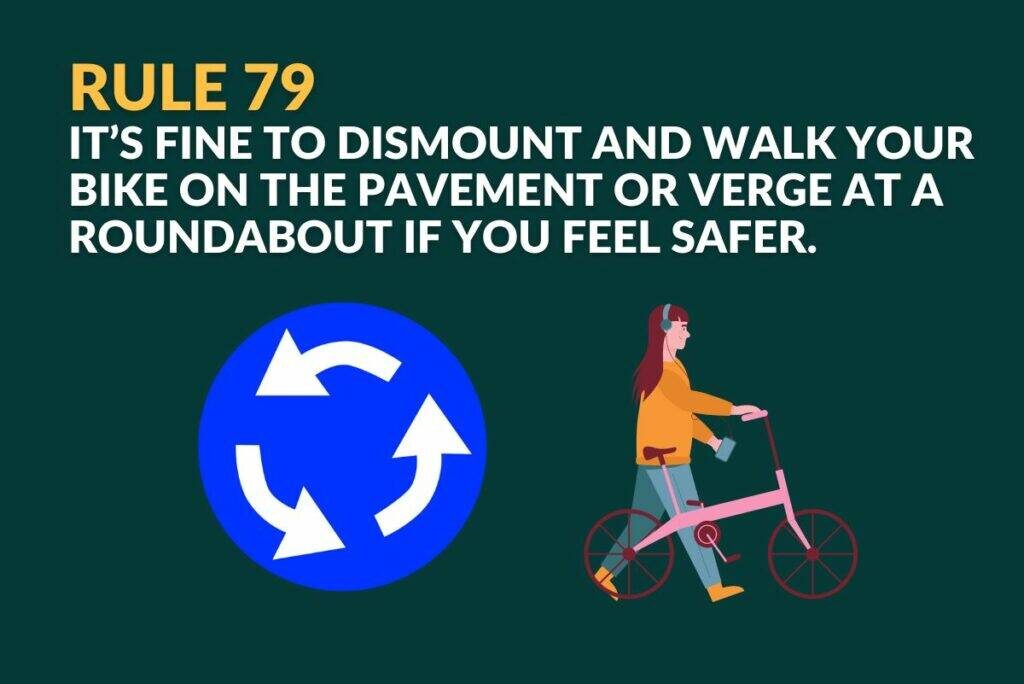
Rule 80: Give plenty of room to long vehicles on a roundabout – do not ride in the space they need to get around it.
Rule 81: Do not ride across equestrian crossings. Do not ride across a pelican, puffin or zebra crossing. Dismount and wheel your bike across.
Rule 82: You are allowed to cycle across toucan crossings, which are push-button operated light-controlled crossings allowing cyclists and pedestrians to share crossing space and cross at the same time.
Cycle tracks on the opposite sides of the road might be linked by cycle-only signalled crossings – you may ride across these but you must not do so until the light is green, and you should be aware of pedestrians.
Take extra care when crossing level crossings and tramways, and make sure to dismount where a ‘cyclist dismount’ sign is displayed.
New Highway Code Rules for Cyclists
In early 2022, the Highway Code was updated with some changes for motorists and cyclists alike, to enhance safety for all road users.
The updated code introduced a hierarchy of road users, which means that those who pose the greatest risk to others have a higher level of responsibility, placing drivers at the top.
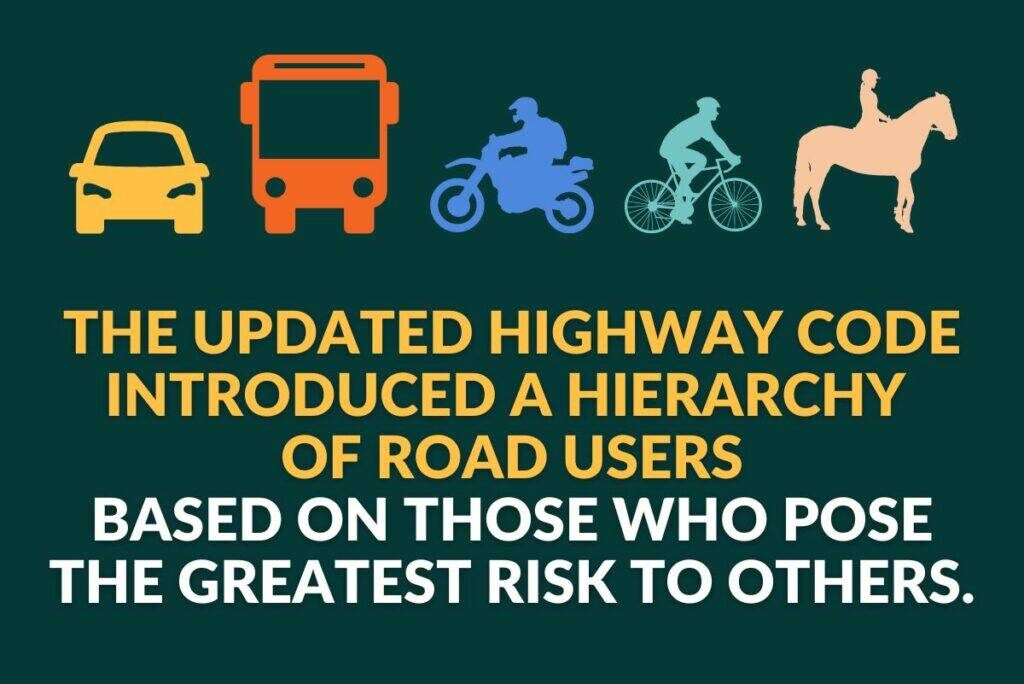
Cyclists have a higher responsibility than horses and pedestrians, so should be particularly aware of their safety, but nonetheless should have regard for all road users’ safety as well as their own.
As such, cyclists should not pass pedestrians, people on horses or horse-drawn vehicles at speed. You are now advised to slow down when necessary, let people know you’re there, and not pass a horse on its left-hand side.
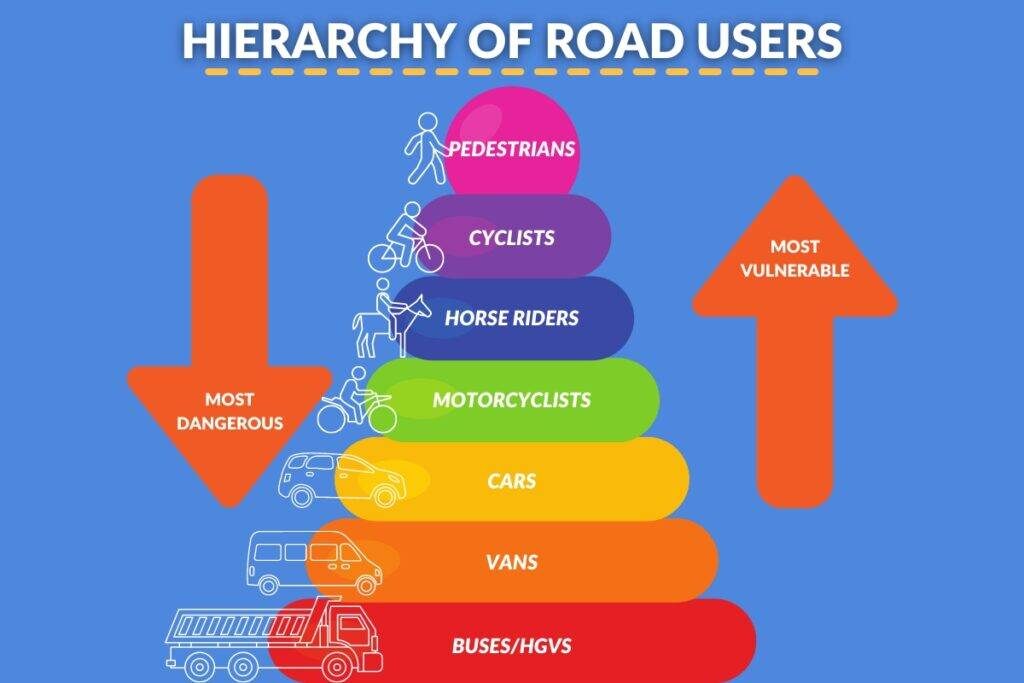
Cyclists have long been advised to ride in the centre of the lane for better visibility and to deter unsafe overtaking, but the Highway Code has now been updated to formalise this advice. It states that cyclists should cycle in the middle of the lane on quiet roads, in slow-moving traffic, and when approaching junctions/road narrowings, and also says that cyclists should maintain 0.5m distance from the kerb when on busier or faster roads.
The new code also clarifies that cyclists can ride two abreast. This has always been the case, but it is often a source of conflict on roads and the change in the language emphasises rider safety.
It also confirms that cyclists can pass stationary or slow-moving traffic on the right or the left.
The 2022 update to the Highway Code also has new rules for cyclists at junctions, for example that, when turning into or out of a junction, cyclists should give way to people who are crossing or waiting to cross. The new Rule 75 outlines two-stage turns at some signal-controlled junctions, and the new code also says that cyclists now have right of way when cycling straight ahead at junctions unless signs say otherwise.
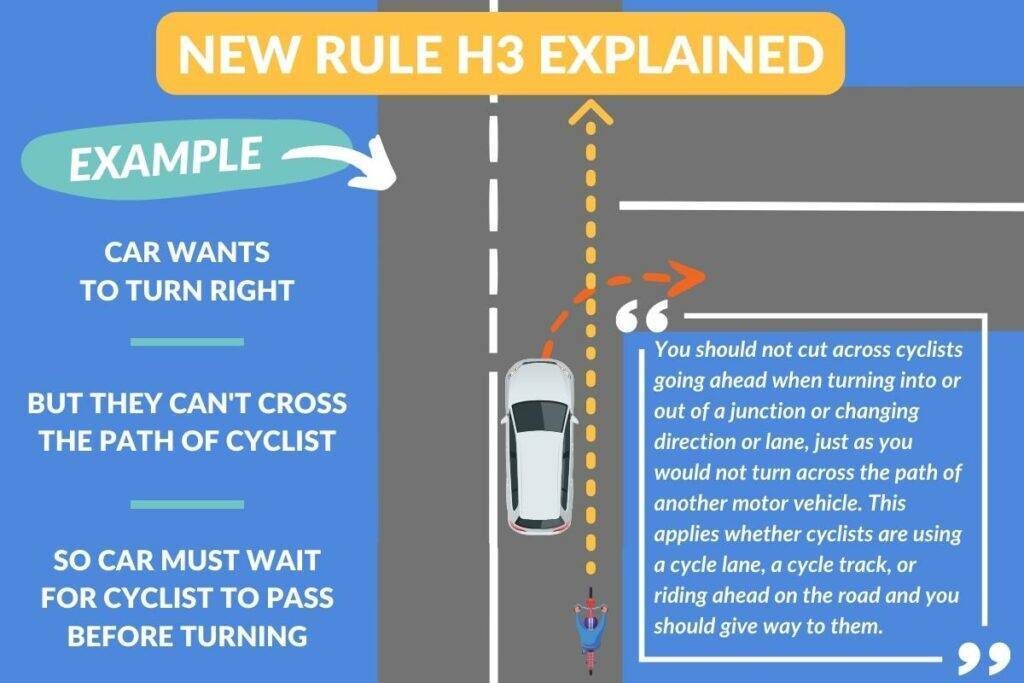
Plus, the update clarifies that cyclists have priority on roundabouts, and that drivers/motorcyclists shouldn’t pass cyclists in their lane.
Bicycle Highway Code FAQs:
-
Are Cyclists Allowed to Ride Side-by-Side?
Yes, cyclists can ride side-by-side two abreast, and it may be safer to do so in certain situations. That said, cyclists should always be considerate of other road users when riding in groups, including allowing drivers to overtake when you think it’s safe.
-
Are Cyclists Allowed on Dual Carriageways?
Yes, cyclists are allowed on dual carriageways, provided there are no signs saying otherwise, but it is not always likely to be a pleasant or safe experience, given how fast traffic moves on dual carriageways.
-
Are Cyclists Allowed on A-Roads?
Yes, cyclists can ride on A-roads, as long as there are no signs saying otherwise. Cyclists are also not allowed to join part of an A-road if it’s designated as a motorway, for example the A1(M).
-
Are Cyclists Allowed in the Bus Lane?
Yes, most bus lanes can be used by cyclists as indicated on signs. You should always be careful when doing so, and especially do not pass between the kerb and a bus when it is at a stop.
-
Are Cyclists Allowed to Run Red Lights?
No, all road users must stop at red lights, including cyclists.
-
Are Cyclists Allowed on Motorways?
No, cyclists are not allowed on motorways – it is illegal to ride a bicycle on the motorway.
-
Are Cyclists Allowed on Pavements?
No, Rule 64 of the Highway Code says you must not cycle on a pavement.
-
Are Cyclists Allowed to Undertake?
Technically, yes, cyclists are allowed to undertake – there is no law to prohibit doing so. However, you should only pass on the left of vehicles when it is safe to do so, i.e. not when they are signalling or slowing to turn left. You should never pass a horse on its left.
-
Can Cyclists Use Mobile Phones?
Technically, yes. It’s not a specific offence to use a mobile phone while cycling, but Rule 66 of the Highway Code states that cyclists should make sure they keep control of their bike, and Rule 68 says it is illegal to ride dangerously, carelessly or inconsiderately.
-
Can Cyclists Wear Headphones?
Yes, legally cyclists can wear headphones, but as a road user you should always ride with due care and attention and ensure you are always fully aware of your surroundings.
-
Can Cyclists Use Pedestrian Crossings?
Cyclists cannot ride across pelican, puffin or zebra crossings, but they can ride across toucan crossings, which are push-button operated light-controlled crossings allowing cyclists and pedestrians to share crossing space and cross at the same time.
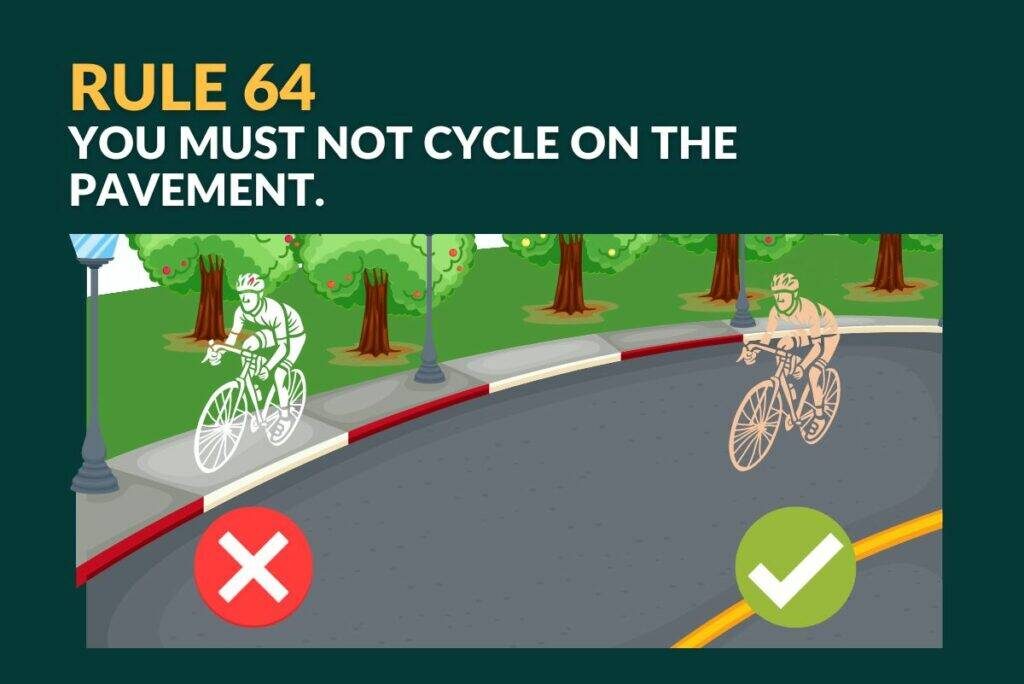
The post Highway Code for Cyclists: 23 Essential Cycling Rules to Know appeared first on Discerning Cyclist.
